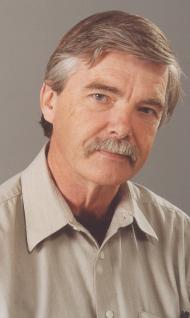(A version of this article was originally published on https://cscan-infocan.ca in honour of Professor Williams’ CS-Can|Info-Can Lifetime Achievement Award)

Cryptography Research Pioneer, Professor and Mentor
As Hugh Williams looks back on his career, he recognizes that there have been many people and conversations that have set and sometimes changed the direction of his career.
“There are a lot of people who influence you in different ways,” says Williams. “You don’t even think of it at the time, but they all make a difference in your life.”
Williams became fascinated with number theory as a teenager and set his sights on pursuing a math degree at nearby McMaster University. When a former math teacher, Mr. Watts, offered to take him on a tour of the University of Waterloo, he realized it was a better fit.
“I got an interview with the great Ralph Stanton. He and I had a lengthy chat. He was impressed enough that he provided me with a scholarship that would pay for my first year,” says Williams. “I liked Waterloo. I liked the newness of the place.”
In 1967, Waterloo converted their math department into a mathematics faculty and created five separate departments, one of which was called Applied Analysis and Computer Science. Don Cowan suggested that Williams pursue his PhD degree in computer science. This move set his career in motion.
“Computer science interested me because I wanted to understand how you can solve problems that arise in number theory,” says Williams. He completed his PhD under the supervision of Ron Mullin, and by doing so is an academic brother of noted researchers Scott Vanstone, Doug Stinson, Jerry Lawless and Paul Schellenberg. Williams is also the academic grandson of William Tutte, a founder of graph theory and an alumnus of Bletchley Park, Britain’s secret facility set up in World War II and staffed with young mathematicians with the purpose of breaking Nazi codes. Hugh Williams’ Academic Family Tree, developed for the Profound Impact platform, shows his full academic ancestry.
After completing his PhD, Williams accepted a faculty position at the University of Manitoba where Ralph Stanton was building a new department of Computer Science. His research continued to focus on computational number theory, but things changed again in 1976 with the publication of the Diffie-Hellman paper, New Directions in Cryptography.
“At that time, cryptography was practised as a dark art not as an academic subject,” says Williams. “But grant money was readily available. I was right there when all this stuff started to happen around me. There were things that we discovered – real surprises. Ideas that seemed so very theoretical with no practical applications turned out to have practical applications. It was always amazing.”
In 1980, during a visit to Stanford University, an opportunity to attend a lecture by Martin Hellman led Williams to write his most cited paper by far on public key cryptography.
“At the time, I didn’t think much of it at all,” says Williams. “After the class, I had a chance to talk with Ralph Merkel, one of Hellman’s students, for a few minutes. He told me about a result of Michael Rabin that came out of Harvard. I started thinking about it and prepared the paper. It was all because of a chance conversation.”
In 2001, after 31 years at the University of Manitoba, Williams was invited to join the University of Calgary’s Department of Mathematics and Statistics as the Alberta Informatics Circle of Research Excellence (iCORE) Chair in Algorithmic Number Theory and Cryptography. He was instrumental in establishing one of Canada’s leading research centres in cryptography and information security.
Although he officially retired in 2016, he continues his research and collaborates with students and other researchers. He considers the students he has taught and mentored to be the most important part of his career.
“The students were the most important thing,” he says. “I could teach them and watch their interest flourish. It was kind of like being a parent. My favourite time was when a student would come in with some computer output, plop it down on my desk, and then we would work to figure out what was going on.”
His students, his research, and his many accomplishments are all sources of pride for Williams.
“Naming a particular accomplishment is like trying to choose a favourite child,” says Williams. “They’re from different times and different parts of life. As you get older, one of the pleasures is to have the ability to look back and see the impact.”